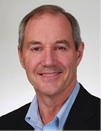How you organize your dealership is fundamental to your success. Whether your dealership has one store, a few or several locations, the choice of how you organize your company has a direct bearing on your performance.
The 7,000 plus farm equipment dealer locations in North America are organized in many different ways. From our work with over 400 dealerships and 1,000 stores in several industries, we see two distinct ways to organize that are at opposite ends of the spectrum. At one end is the Strong Store Manager model that emphasizes local independent decision making and responsibility for results and communication at a single location. Single-location dealers use this approach as do many multi-location dealerships for each of their stores.
At the other end is the Centralized model that emphasizes uniform processes and policies across all locations. This approach requires highly skilled and compensated managers who are responsible for employees in their department at all store locations.
Single & Happy
If you’re a single-store dealership, you’re probably the owner operator and your standards of success are likely tied to personal achievement and family lifestyle. To maintain or improve your lifestyle, personal income is likely the goal as long as company cash flow is adequate and employees and customers are satisfied.
The typical focus for a single-store dealership is to find managers strong enough to run their departments withlittle oversight and direction. This allows you to concentrate on the areas of the business that most interest you. Your selection of managers and reporting structure depends on your own management style (highly involved vs. empowering), comfort level in delegating or sharing financial information, and the area from which you can recruit talent.
We’ve observed with some dealerships, the success and the quality of departmental management depends on the owner-principal’s willingness to change. Success — however you define it — can be limited or flourish depending on your willingness to replace or coach managers who aren’t delivering the results that you need.
For one-store dealerships, organization and operation comes down to your initiative, ability to find and recruit good managers, and willingness to make changes. It’s all about you and how you influence your employees.

Strong Store Managers
For those dealerships that have expanded into multiple locations, we see a choice between the two organizational models.
The first option of the “strong store manager” approach is very similar to the approach of a single-store dealer. The store manager controls “their” operation by whatever management and financial controls that are in place. As an owner, if you aren’t the store manager, typically you delegate most daily decisions and responsibilities to the store manager.
This type of organization is based on the principle that each store needs to stand on its own, and good performance is best achieved by giving the store manager complete responsibility.
If you can find a “strong” store manager for each location, delegate responsibilities and hold them accountable, this model can be successful. At the same time, it can be risky because you depend so much on this person’s ability to lead and manage.
Centralized Functions
The other option for larger multi-store dealerships, which is more typical of dealers with 6-8 or more locations, is for a centralized organization and individual managers for equipment sales, parts and service. With this type of organization, one manager is responsible for each of these profit centers at all of your locations. The staff at each location reports to them.
This concept considers your dealership as one company operating in various locations. Instead of linking customers to one store, this model focuses on satisfying customers from whatever location can best serve them.
Centralization drives the financial strategy for hiring more highly skilled and effective managers for each function or department. For example, instead of the cost of having a parts manager in each of 5 locations and paying them $50,000 a year (a total of $250,000 annually) consider hiring one very talented parts manager for $100,000-plus and appointing a lead counter person at each location. Because of their skills and effectiveness, a corporate parts manager should be more productive than 4 or 5 less talented or experienced people.
Span of Control
The same skill and qualifications required for multi-store organizations, also apply to department or store managers for single stores. The only real difference is the span of control. You need to find good department managers in any type of organization, but in the centralized approach, the person must be able to effectively manage when they’re not in daily face-to-face contact with their employees.
Regardless of your organizational approach, the best dealers look for ways to learn from their multi-location operations. Can “best practices” from one location be replicated in other branches? Successful dealerships we’ve worked with continuously look for ways to improve their operations and adapt best practices throughout their organizations.
At the same time, we’ve found dealerships that haven’t been successful in implementing needed changes are usually those using the strong store manager model. For many store managers, unless it’s their idea, they won’t implement a new “best practice.” This is the biggest downside of this type of organization.
The authors are with Currie Management Consultants, which specialize in advising dealers in the machinery industry. They can be reached atGRussell@CurrieManagement.com and
GKeene@CurrieManagement.com.







